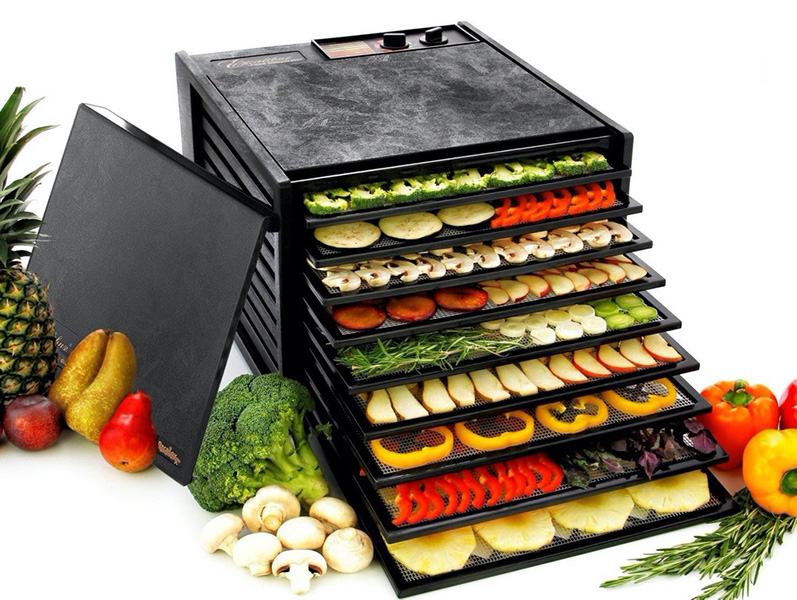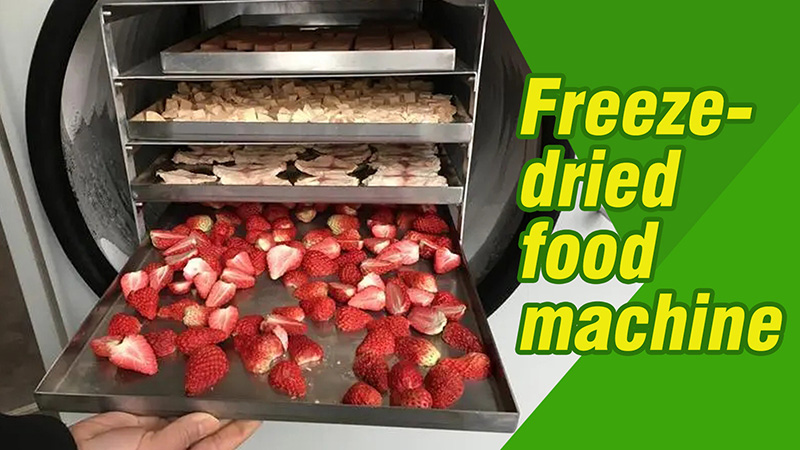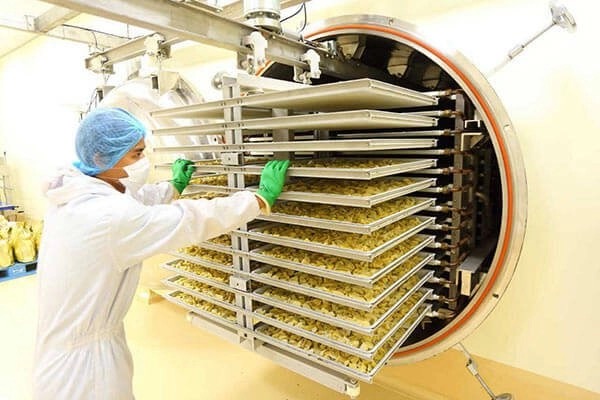
Content Menu
● Introduction
● Understanding Dehydrators
>> What is a Dehydrator?
>> How Dehydrators Work
>> Benefits of Using a Dehydrator
>> Limitations of Dehydrators
● Exploring Freeze Dryers
>> What is a Freeze Dryer?
>> How Freeze Dryers Work
>> Benefits of Using a Freeze Dryer
>> Limitations of Freeze Dryers
● Comparing Dehydrators and Freeze Dryers
● Choosing the Right Dry Food Machine for You
● Tips for Using Dry Food Machines
● Conclusion
● Video Demonstration
● Frequently Asked Questions
>> 1. How long does food last when preserved in a dehydrator versus a freeze dryer?
>> 2. Can I use a dehydrator or freeze dryer for all types of food?
>> 3. How do the costs of operating a dehydrator compare to a freeze dryer?
>> 4. Is it possible to over-dry food in a dehydrator or freeze dryer?
>> 5. How do I know which dry food machine is right for me?
Introduction
In today's world of food preservation and long-term storage, dry food machines have become increasingly popular among homesteaders, preppers, and health-conscious individuals. Two primary types of dry food machines dominate the market: dehydrators and freeze dryers. This comprehensive guide will explore the benefits, uses, and differences between these two innovative food preservation technologies.
Understanding Dehydrators
What is a Dehydrator?
A dehydrator is a device that removes moisture from food using low heat and air circulation. This process helps preserve food by inhibiting the growth of bacteria and mold, which require moisture to thrive.
How Dehydrators Work
Dehydrators typically consist of stacked trays with a heating element and a fan. The heating element warms the air, while the fan circulates it around the food, gradually removing moisture. This process can take anywhere from a few hours to a day or more, depending on the food being dehydrated and the desired level of dryness.

Benefits of Using a Dehydrator
1. Cost-effective: Dehydrators are generally less expensive than freeze dryers, making them accessible to a wider range of users.
2. Easy to use: These machines are simple to operate and require minimal maintenance.
3. Versatility: Dehydrators can be used to dry a wide variety of foods, including fruits, vegetables, meats, and herbs.
4. Space-efficient: Most dehydrators have a smaller footprint than freeze dryers, making them suitable for kitchens with limited counter space.
5. Energy-efficient: Dehydrators typically consume less energy than freeze dryers, resulting in lower operating costs.
Limitations of Dehydrators
1. Nutrient loss: The heat used in dehydration can cause some nutrient loss, with estimates suggesting up to 50% of nutrients may be lost during the process.
2. Texture changes: Dehydrated foods often have a different texture compared to their fresh counterparts, which may not be appealing to everyone.
3. Limited shelf life: While dehydrated foods can last for several months to a few years, their shelf life is generally shorter than that of freeze-dried foods.
Exploring Freeze Dryers
What is a Freeze Dryer?
A freeze dryer is a more advanced food preservation machine that removes moisture from food through a process called sublimation. This method preserves the food's original structure, flavor, and nutritional content more effectively than traditional dehydration.

How Freeze Dryers Work
The freeze-drying process involves three main steps:
1. Freezing: The food is rapidly frozen to temperatures as low as -40°F (-40°C).
2. Primary drying: A vacuum is created around the frozen food, and the temperature is slowly raised. This causes the ice to sublimate directly into vapor without passing through the liquid phase.
3. Secondary drying: Any remaining moisture is removed by further increasing the temperature while maintaining the vacuum.
Benefits of Using a Freeze Dryer
1. Superior nutrient retention: Freeze-dried foods retain up to 97% of their original nutritional value.
2. Extended shelf life: Properly packaged freeze-dried foods can last up to 25 years or more.
3. Minimal texture and flavor changes: The freeze-drying process preserves the food's original structure and taste, resulting in a product that closely resembles its fresh counterpart when rehydrated.
4. Versatility: Freeze dryers can be used on a wide range of foods, including fruits, vegetables, meats, dairy products, and even complete meals.
5. No additives required: The freeze-drying process naturally preserves food without the need for additional preservatives or chemicals.
Limitations of Freeze Dryers
1. Higher initial cost: Freeze dryers are significantly more expensive than dehydrators, which may be a barrier for some users.
2. Longer processing time: The freeze-drying process can take 24-48 hours or more, depending on the food being processed.
3. Higher energy consumption: Freeze dryers use more energy than dehydrators, which can result in higher operating costs.
4. Larger size: Freeze dryers typically have a larger footprint than dehydrators, requiring more counter or storage space.
Comparing Dehydrators and Freeze Dryers
To help you decide which dry food machine is right for you, let's compare dehydrators and freeze dryers across several key factors:
1. Cost:
- Dehydrators: Generally range from $50 to $300 for home models.
- Freeze dryers: Home models typically start at $2,000 and can go up to $5,000 or more.
2. Processing time:
- Dehydrators: Usually take 6-16 hours, depending on the food and desired dryness.
- Freeze dryers: Require 24-48 hours or more for a complete cycle.
3. Nutrient retention:
- Dehydrators: Retain about 60-70% of the food's original nutrients.
- Freeze dryers: Preserve up to 97% of the food's original nutrients.
4. Shelf life of preserved food:
- Dehydrated foods: Typically last 1-5 years when properly stored.
- Freeze-dried foods: Can last 25 years or more when properly packaged and stored.
5. Texture and flavor:
- Dehydrated foods: Often have a chewy texture and may have slightly altered flavors.
- Freeze-dried foods: Maintain a structure similar to the original food and retain most of their original flavor.
6. Rehydration:
- Dehydrated foods: May require cooking or soaking to rehydrate fully.
- Freeze-dried foods: Typically rehydrate quickly with the addition of water.
7. Energy consumption:
- Dehydrators: Generally use less energy, resulting in lower operating costs.
- Freeze dryers: Consume more energy due to the freezing and vacuum processes.

Choosing the Right Dry Food Machine for You
When deciding between a dehydrator and a freeze dryer, consider the following factors:
1. Budget: If cost is a primary concern, a dehydrator may be the better choice for getting started with food preservation.
2. Space: Consider the available space in your kitchen or storage area. Dehydrators are typically more compact than freeze dryers.
3. Types of food: While both machines can handle a variety of foods, freeze dryers are better suited for preserving dairy products, meats, and complete meals.
4. Desired shelf life: If you're looking for extremely long-term food storage, a freeze dryer will provide better results.
5. Energy costs: Factor in the ongoing energy costs of operating each machine, especially if you plan to use it frequently.
6. Time investment: Consider how much time you're willing to spend on food preservation. Freeze dryers require longer processing times but less preparation work.
Tips for Using Dry Food Machines
Whether you choose a dehydrator or a freeze dryer, here are some tips to get the most out of your dry food machine:
1. Prepare foods properly: Cut foods into uniform sizes for even drying or freeze-drying.
2. Pre-treat fruits: Dip fruits in lemon juice or ascorbic acid solution to prevent browning.
3. Use appropriate containers: Store dried or freeze-dried foods in airtight containers or vacuum-sealed bags to maintain freshness.
4. Label and date: Always label your preserved foods with the contents and date of processing.
5. Rotate your stock: Use the "first in, first out" method to ensure you're consuming your preserved foods before they expire.
6. Experiment with different foods: Try preserving a variety of fruits, vegetables, and even complete meals to discover your favorites.
7. Consider your power source: If you live in an area prone to power outages, have a backup power source for your freeze dryer to prevent interruptions in the process.
Conclusion
Dry food machines, whether dehydrators or freeze dryers, offer excellent ways to preserve food for long-term storage, emergency preparedness, or healthy snacking. While dehydrators are more affordable and energy-efficient, freeze dryers provide superior nutrient retention and longer shelf life for preserved foods. By considering your specific needs, budget, and available space, you can choose the right dry food machine to enhance your food preservation efforts and enjoy nutritious, long-lasting food storage options.
Video Demonstration
For a visual demonstration of how a freeze dryer works, check out this informative video:
This video by Harvest Right shows the step-by-step process of using a home freeze dryer, giving you a clear idea of how these machines operate and the quality of food they produce.
Frequently Asked Questions
1. How long does food last when preserved in a dehydrator versus a freeze dryer?
Answer: Dehydrated foods typically last 1-5 years when properly stored, while freeze-dried foods can last 25 years or more when properly packaged and stored in optimal conditions.
2. Can I use a dehydrator or freeze dryer for all types of food?
Answer: Both machines can handle a wide variety of foods, but freeze dryers are better suited for preserving dairy products, meats, and complete meals. Dehydrators work well for fruits, vegetables, and herbs but may not be ideal for foods with high fat content.
3. How do the costs of operating a dehydrator compare to a freeze dryer?
Answer: Dehydrators generally have lower operating costs due to their lower energy consumption. Freeze dryers use more energy because of the freezing and vacuum processes, resulting in higher electricity bills.
4. Is it possible to over-dry food in a dehydrator or freeze dryer?
Answer: Yes, it is possible to over-dry food in both machines. In a dehydrator, over-drying can lead to brittle, unpalatable food. In a freeze dryer, over-drying is less common but can occur if the cycle is extended too long, potentially affecting the food's texture upon rehydration.
5. How do I know which dry food machine is right for me?
Answer: Consider factors such as your budget, available space, types of food you want to preserve, desired shelf life, and energy costs. If you're new to food preservation or have a limited budget, a dehydrator might be a good starting point. If you're looking for long-term food storage with maximum nutrient retention and don't mind the higher initial investment, a freeze dryer could be the better choice.












